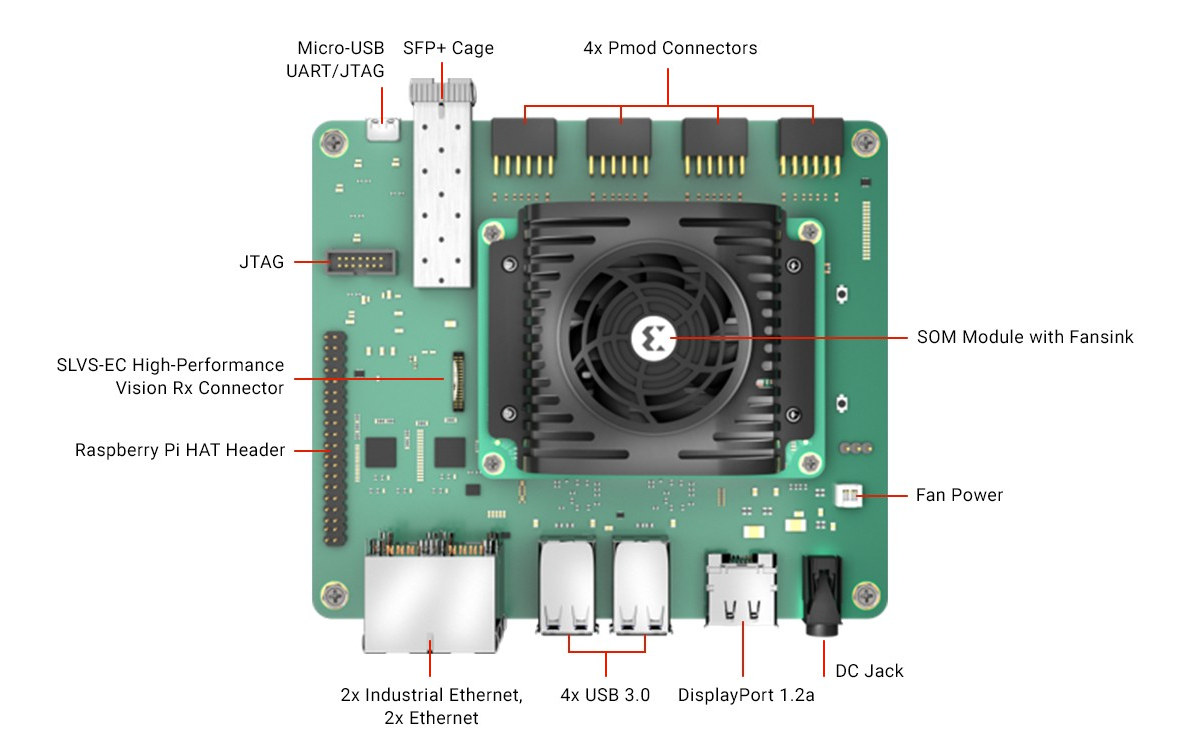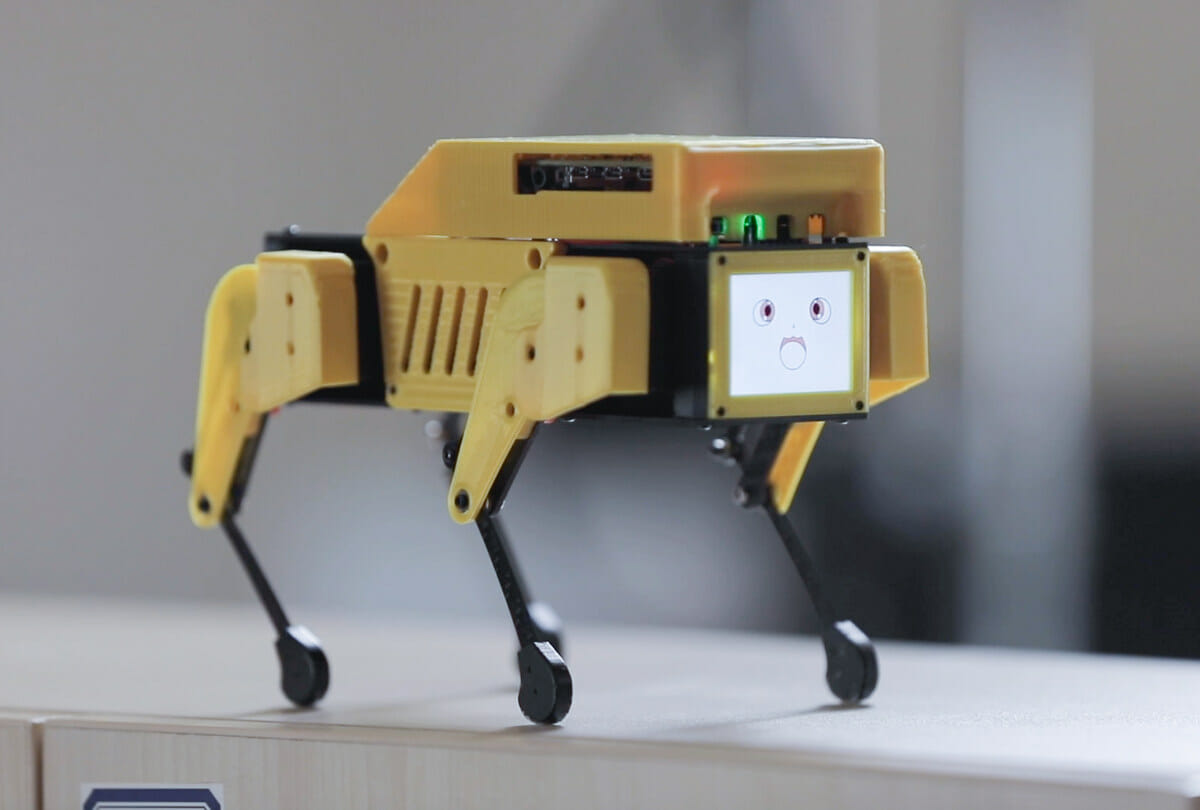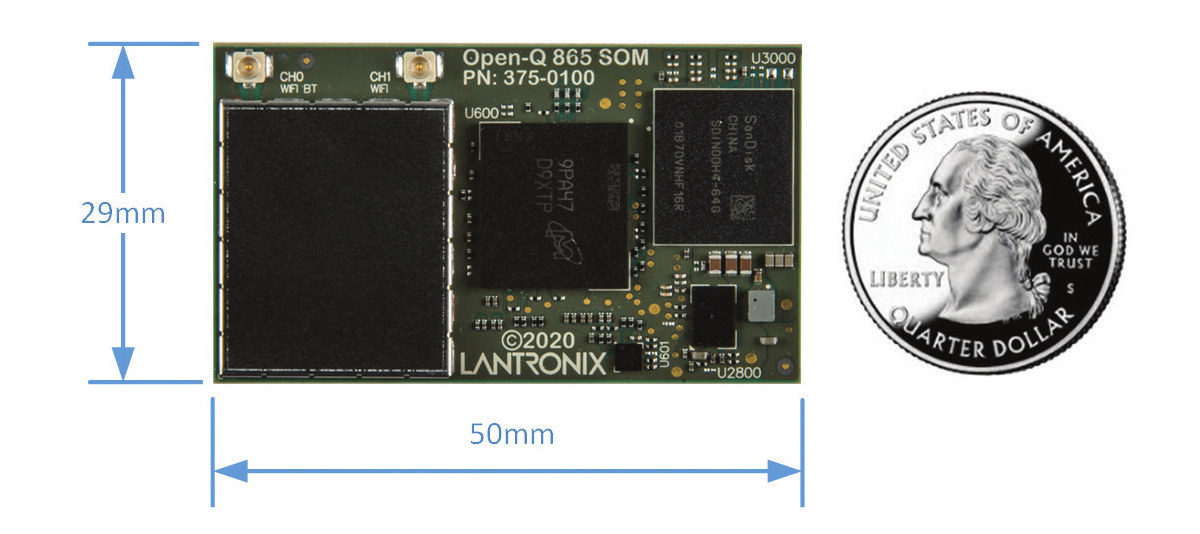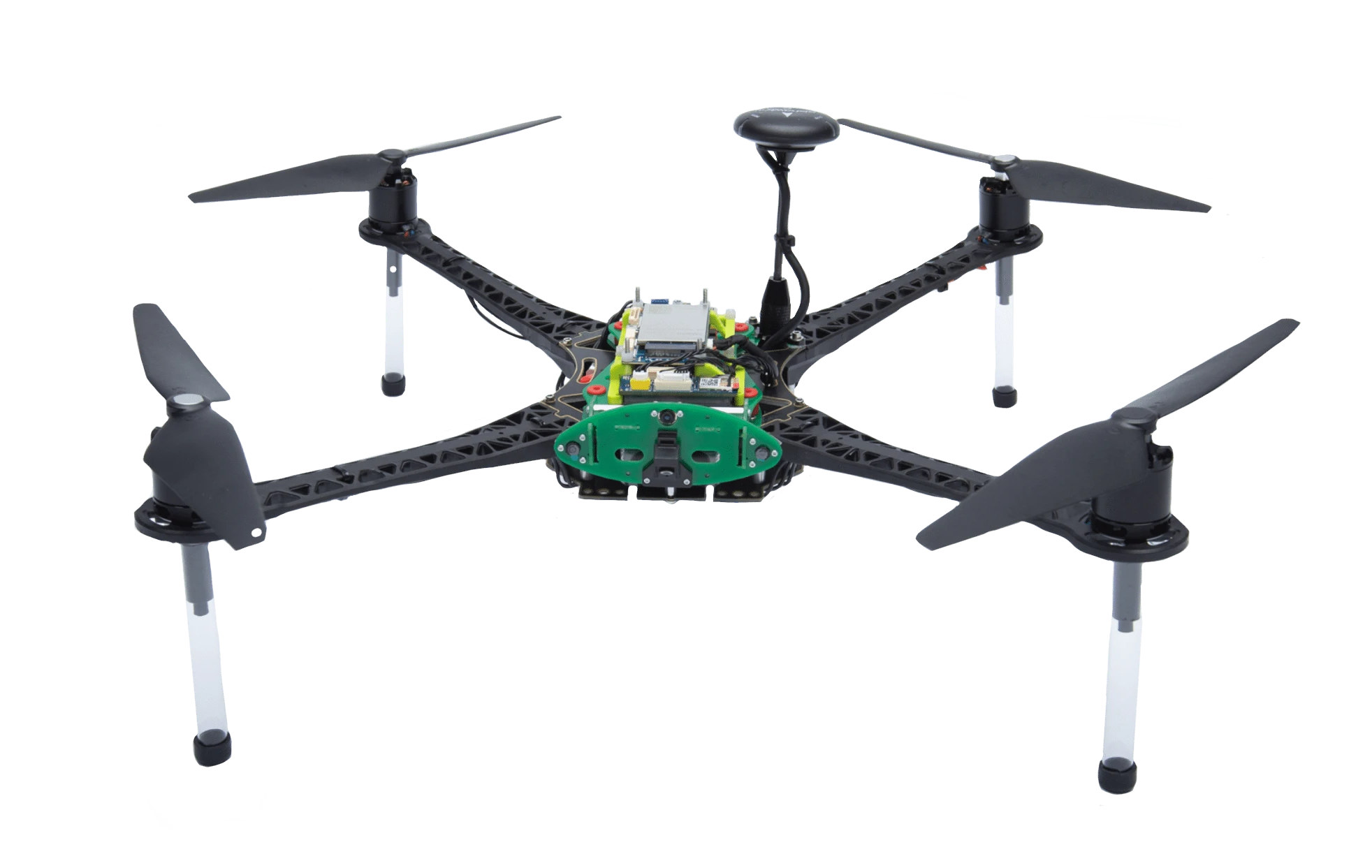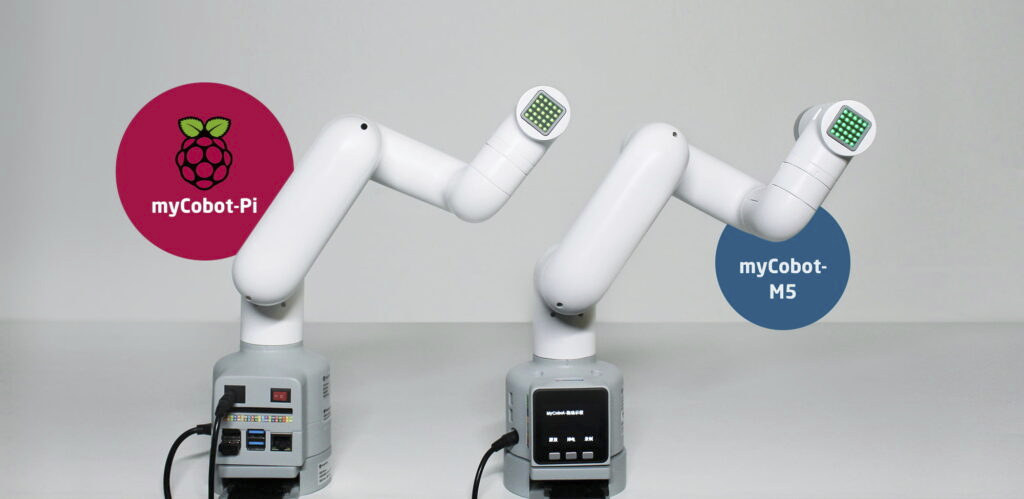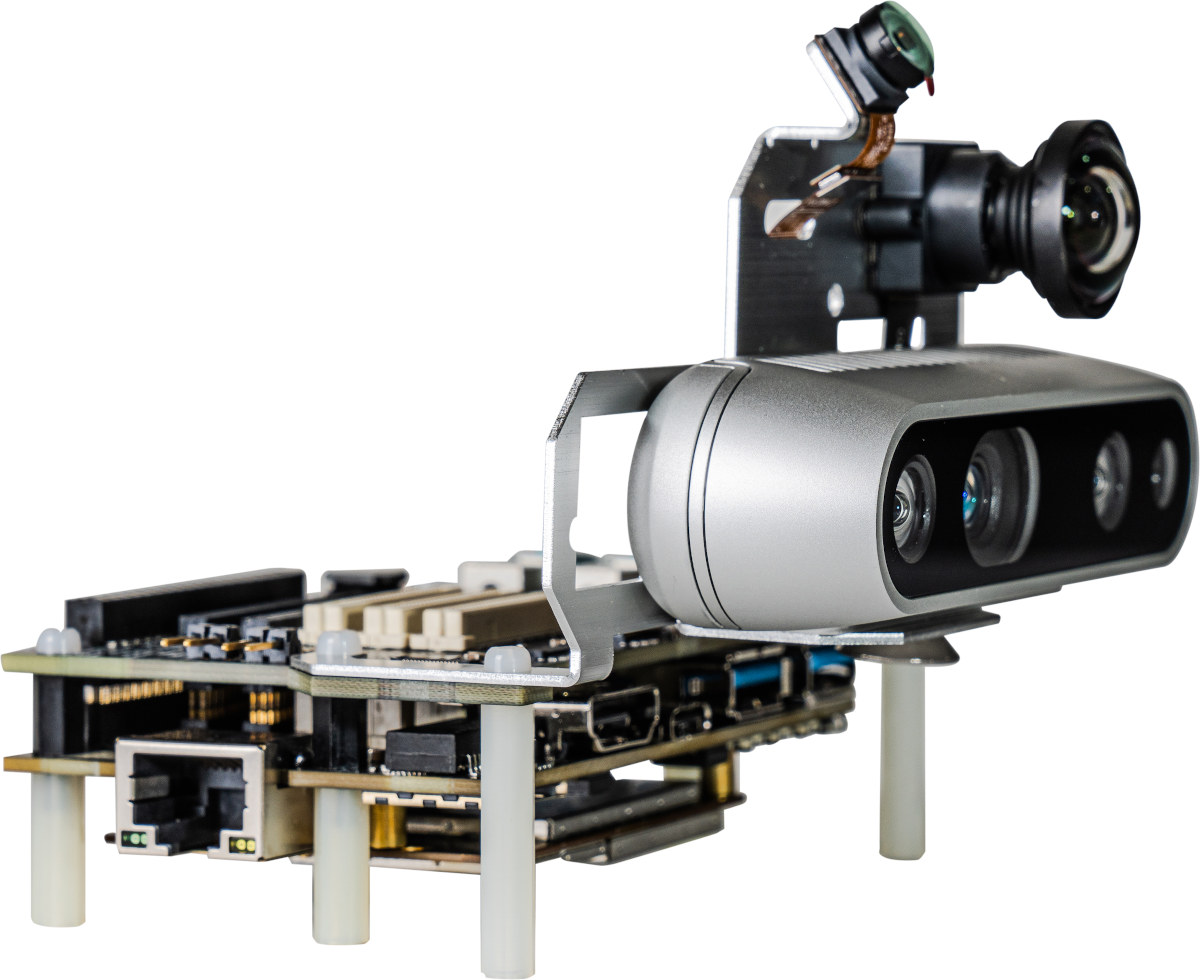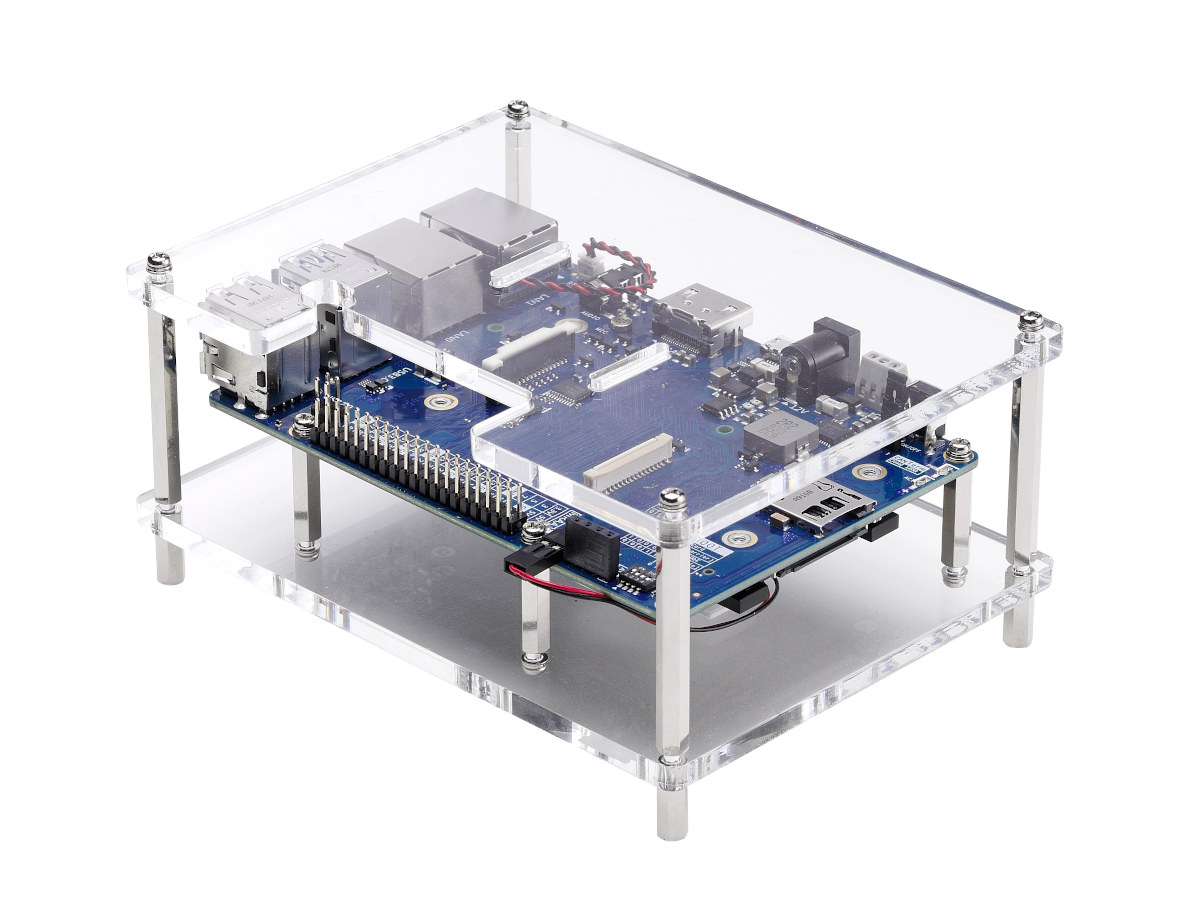AMD Xilinx Kria KR260 Robotics Starter Kit features the Kria K26 Zynq UltraScale+ XCK26 FPGA MPSoC system-on-module (SoM) introduced last year together with the Kria KV260 Vision AI Starter Kit. Designed as a development platform for robotics and industrial applications, the KR260 is said to deliver nearly 5x productivity gain, up to 8x better performance per watt and 3.5x lower latency compared to Nvidia Jetson AGX Xavier or Jetson Nano kits. We’ll have a better look at the details below. Kria KR260 Robotics Starter Kit specifications: SoM – Kria K26 module with: MPSoC – Xilinx Zynq Ultrascale+ custom-built XCK26 with quad-core Arm Cortex-A53 processor up to 1.5GHz, dual-core Arm Cortex-R5F real-time processor up to 600MHz, Mali-400 MP2 GPU up to 667MHz, 4Kp60 VPU, 26.6Mb On-Chip SRAM, 256K logic cells, 1,248 DSP slices, 144 Block RAM blocks, 64 UltraRAM blocks System Memory – 4GB 64-bit DDR4 (non-ECC) Storage – 512 Mbit […]
OASIS – ROS 2 based Smart Home operating system integrates with Kodi
OASIS is a Smart Home operating system based on ROS 2 that currently implements computer vision, input streaming, and general automation features, and can be integrated into Kodi media center. The operating system was recently released by Garrett Brown (a.k.a. garbear or eigendude), who is also known for being the RetroPlayer developer from Team Kodi/XBMC, and provides a complete implementation of the Firmata protocol for communicating with Arduino boards, plus additional support for temperature and humidity sensors, I2C, servos, sonar, SPI, stepper motors, and 4-wire CPU fans. Two main use cases are computer vision and input streaming at this time. The illustration above shows the former with the Kinect 2 driver ported to ROS 2, a background subtractor on all camera feeds using bgslibrary C++ background subtraction library, and Kodi as the visual interface. The second, input streaming, can be seen below with a Lego train (including a Falcon spaceship!) […]
Mini Pupper – Raspberry Pi 4-based robot dog teaches ROS, SLAM, navigation, computer vision (Crowdfunding)
Mini Pupper is a Raspberry Pi 4 powered robot dog inspired by Stanford Pupper open-source quadruped robot, and designed in “light collaboration” with Nathan Kau, the original creator of Stanford Pupper. Just like the original design, MangDang’s Mini Pupper is open-source, based on Ubuntu and ROS (Robot Operating System), and designed for robotics education in schools, homeschool families, enthusiasts and others, with notably students being able to learn out to use ROS, SLAM, navigation, and OpenCV computer vision through online courses that will come with the robot. Mini Pupper key features and specifications: SBC – Raspberry Pi 4 Model B with 2GB RAM Storage – 2GB microSD card Display – 320×240 LCD for facial animation Camera – Support for OpenCV AI Kit Lite 12 DOF via MangDang’s custom servos Optional Lidar module for SLAM (Simultaneous localization and mapping) Battery – 800 mAh Charger – Input voltage – 100-240V AC 50/60Hz, […]
Qualcomm QRB5165 system-on-module is made for robotics applications
Lantronix Open-Q 5165RB is a tiny System-on-Module (SoM) based on the same Qualcomm QRB5165 octa-core IoT processor we’ve just seen in Qualcomm Flight RB5 5G Platform high-end drone reference design. The ultra-compact (50x29mm) module comes with 8GB LPDDR5, 128GB UFS flash, multiple MIPI camera and display ports, WiFi 6 and Bluetooth 5.1, and various I/Os. Lantronix Open-Q 5165RB module specifications: SoC – Qualcomm QRB5165 SoC built on 7nm technology with Octa-core CPU with 1x Kryo Gold prime @ 2.84 GHz, 3x Kryo Gold @ 2.42 GHz, 4x Kryo Silver @ 1.81 GHz Hexagon 698 DSP with quad Hexagon Vector eXtensions Adreno™ 650 GPU @ up to 587 MHz Spectra 480 Image Signal Processor Adreno 665 Video Processing unit – Decode up to 4K240/8K60, Encode up to 4K120/8K30, Concurrent 4K60 decode & 4K30 encode for wireless display NPU230 Neural Processing unit SPU240 Secure Processing unit Up to 15 TOPS of combined […]
Qualcomm Flight RB5 5G Platform is a high-end drone reference design with 7 cameras
Leveraging its involvement in the Ingenuity Mars helicopter, Qualcomm has introduced the Qualcomm Flight RB5 5G platform, a high-end drone reference design with 5G and WIFi 6 connectivity, seven cameras up to 8K resolution, and 15 TOPS of AI performance. The platform is based on Qualcomm QRB5165 octa-core processor, a variant of Snapdragon 865 for robotics, also found in Qualcomm Robotics RB5 Platform with support for Intel RealSense D435i (that should reach end-of-life soon), and provides an upgrade to the company’s Flight Pro drone based on Qualcomm Snapdragon 820 platform. Qualcomm Flight RB5 5G Platform key features and specifications: SoC – Qualcomm QRB5165 with eight Kryo 585 cores up to 2.84 GHz, GPU Adreno 650 GPU with support for Open GL ES and OpenCL, Hexagon 698 DSP with HVX, Hexagon Tensor Accelerator, Qualcomm Spectra 480 ISP with dual 14-bit image signal processing Memory – LPDDR5 up to 2750 MHz, LPDDR4x up […]
MyCobot robotic arm is offered with Raspberry Pi 4 or M5Stack ESP32 modules
Elephant Robotics’ MyCobot robotic arm was introduced last year with M5Stack Atom & Basic ESP32 modules with 6-degrees of freedom, a 250 grams max payload, available now for $599. The company has launched a new $699 version – MyCobot-Pi – with most of the same features, except for an upgrade to Raspberry Pi 4B which offers more performance and flexibility. Both versions of MyCobot arm robotic arm support accessories such as a gripper and a suction pump attachable through a LEGO connector, but while the original version – MyCobot-M5 – relies on Arduino programming, the new MyCobot-Pi runs Debian/Ubuntu and ROS operating systems with image recognition algorithms that can work with a variety of cameras. Since we’ve missed last year’s announcement, we’ll cover both models in this article. MyCobot Robotic Arm Despite the mechanical parts being the same, the specifications for MyCobot-M5 and MyCobot-Pi differ quite a lot: Controller MyCobot-M5 […]
Qualcomm Robotics RB5 Platform Targets the Development of 5G and AI-Enabled Robots
Qualcomm Robotics RB3 Development Platform powered by Snapdragon 845 processor gets an upgrade with Robotics RB5 Platform equipped with Qualcomm QRB5165 Robotics processor designed for industrial-grade temperature operating, and featuring a 15 TOPS Qualcomm AI Engine fo artificial intelligence and machine learning applications such as heterogeneous computing, enhanced computer vision, and multi-camera concurrency. The development platform also supports for 4G and 5G connectivity via a companion module and runs Ubuntu and ROS 2.0 operating systems. Qualcomm Robotics RB5 development kit specifications: SoC – Qualcomm QRB5165 with Kryo 858 CPU @ up to 2.84 GHz, Adreno 650 GPU, Adreno 665 VPU, Adreno 995 DPU, Qualcomm Hexagon DSP with quad HVX, and Qualcomm Spectra 480 ISP System Memory – 16GB LPDDR5 RAM (POP) Storage – 128 GB UFS3.0 storage, MicroSD card slot Video Output – 1x HDMI 1.4 port Audio – 2x WSA8810 Class-D on-board speaker amplifier, built-in PDM MIC, support for […]
ROScube Pico SBC Runs Ubuntu & ROS on Intel Atom or Rockchip PX30 Processor
ADLINK has launched ROScube Pico SBC designed for robotics projects and powered by either an Intel Atom x5 Apollo Lake processor or a Rockchip PX30 Arm Cortex-A35 processor via their SMARC-compliant system-on-modules namely LEC-AL and as LEC-PX30. Both models run Ubuntu and ROS/ROS-2 operating systems simultaneously, and the company also provides NeuronBot robotics development and demo kit based on the SBC. ROScube Pico SBC and Devkit If ROScube Pico looks similar it’s because it appears to be based entirely on ADLINK previously announced ADLINK Industrial-Pi (I-Pi) SMARC Development Kit based on Rockchip PX30, and Vizi-AI development starter kit based on Atom x5-E3940 SoC and Movidius Myriad X VPU. Those are the specifications listed for ROScube Pico: SMARC Module For ROScube Pico NPS-1 – LEC-AL with Intel Atom processor, Intel Movidius Myriad X AI accelerator, 8GB LPDDR4 RAM, 32GB eMMC For ROScube Pico NPS-4 – LEC-PX30 with Rockchip PX-30 quad-core Cortex-A35 […]


